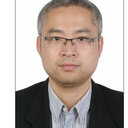Saikosaponin-d increases the radiosensitivity of smmc-7721 hepatocellular carcinoma cells by adjusting the g0/g1 and g2/m checkpoints of the cell cycle.
Słowa kluczowe
Abstrakcyjny
BACKGROUND
Saikosaponin-d (SSd), a monomer terpenoid purified from the Chinese herbal drug Radix bupleuri, has multiple effects, including anticancer properties. However, the effect of SSd on tumors exposed to radiation is largely unknown. To investigate the radiosensitizing effect of SSd and its possible mechanism, we combined SSd with radiation therapy to treat SMMC-7721 hepatocellular carcinoma cells under oxia and hypoxia.
METHODS
Cell growth, apoptosis, and cell cycle distribution were examined after treatment with SSd alone, radiation alone, and their combinations under oxia and hypoxia. The protein and mRNA levels of p53, Bcl2, and BAX were measured using western blot analysis and RT-PCR, respectively.
RESULTS
Treatment with SSd alone and radiation alone inhibited cell growth and increased apoptosis rate at the concentration used. These effects were enhanced when SSd was combined with radiation. Moreover, SSd potentiated the effects of radiation to induce G0/G1 arrest in SMMC-7721 cells, and reduced the G2/M-phase population under hypoxia. However, under oxia, SSd only potentiated the effects of radiation to induce G0/G1 arrest, but not G2/M-phase arrest. These effects of SSd alone, radiation alone, and their combination, were accompanied by upregulated expression of p53 and BAX and downregulation of Bcl2 expression under oxia and hypoxia.
CONCLUSIONS
SSd potentiates the effects of radiation on SMMC-7721 cells; thus, it is a promising radiosensitizer. The radiosensitizing effect of SSd may contribute to its effect on the G0/G1 and G2/M checkpoints of the cell cycle.


